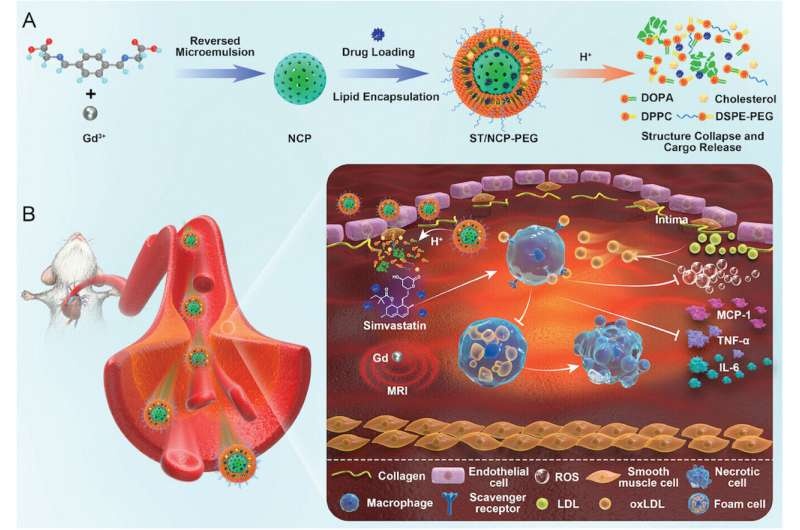Scientists from the National University of Singapore have discovered a new nanomedicine that promises to revolutionise existing treatment strategies for diseases such as brain tumor and more. This game-changing approach could open the path to a revolution in non-invasive, targeted cardiovascular management.

Tackling the Silent Killer
Silent but deadly, atherosclerosis is the accumulation of plaque in the arteries and heralds ischemic heart disease and stroke — both leading causes of cardiovascular-related deaths around the world.
Lack of physical activity, tobacco use and diet poor in nutrients are the factors that have been linked to rise of atherosclerosis led conditions and this is worsened by increased consumption of alcohol. In Singapore, these are the reasons behind 31% of all deaths, with obesity-related heart attacks set to triple by 2050.
The existing image techniques, such as intravascular ultrasound, coronary angiography, and magnetic resonance imaging (MRI), had a limited resolution or invasiveness and the lack of targeting drug delivery. In addition, no medications or interventions are currently available that can specifically address the underlying atherosclerotic plaque burden and work to decrease it, which makes the management of this condition difficult.
Safe space for theranostics
A team of researchers from the National University of Singapore (NUS) has developed a technique to chemically modify quercetin, which could potentially be used in treating atherosclerosis.
This theranostic concept, particularly the combination of diagnostic and therapeutic functions are an unprecedented milestone in the field of cardiovascular medicine. The team led by Assistant Professor Wang Jiong-Wei from Surgery, Nanomedicine Translational Research Programme at NUS Medicine and Cardiovascular Research Institute (CVRI), has developed a nanoparticle that can detect the severity of atherosclerotic plaques as well as control inflammation to halt the progression of the disease.
It is made up of nanoscale coordination polymers (NCP) and a pH-responsive linker that allows it to break down specifically in the acidic environment of atherosclerotic plaques. This results in infusion of gadolinium (a MRI contrast agent), and allows real-time visualization to assess plaque severity. At the same time, this nanoparticle leads to the plaques with the water-in-solublet drug Simvastatin because it has anti-inflammatory and anti- reactive oxygen species(ROS) effects which helps a lot in stabilizing and treatment of these plagues.
Compared to the systemic delivery of equivalent doses of Simvastatin, 1000 times more drug can be expected to penetration into plaques with lower dose levels in nanoparticles, thereby improving therapeutic efficiency and minimizing systemic side effects.
Conclusion
A new nanoparticle technology developed by scientists at the National University of Singapore (NUS) enables personalized therapy for cardiovascular disease. This novel approach couples non-invasive diagnostic capability with targeted therapeutic delivery, an elegant solution to one of the most significant health challenges facing human beings—atherosclerosis leads heart disease and stroke. The technology has the power of transforming care for cardiac disease, ushering in a new era of personalized, efficient and minimally invasive treatment options – saving lives and improving patient outcomes.
